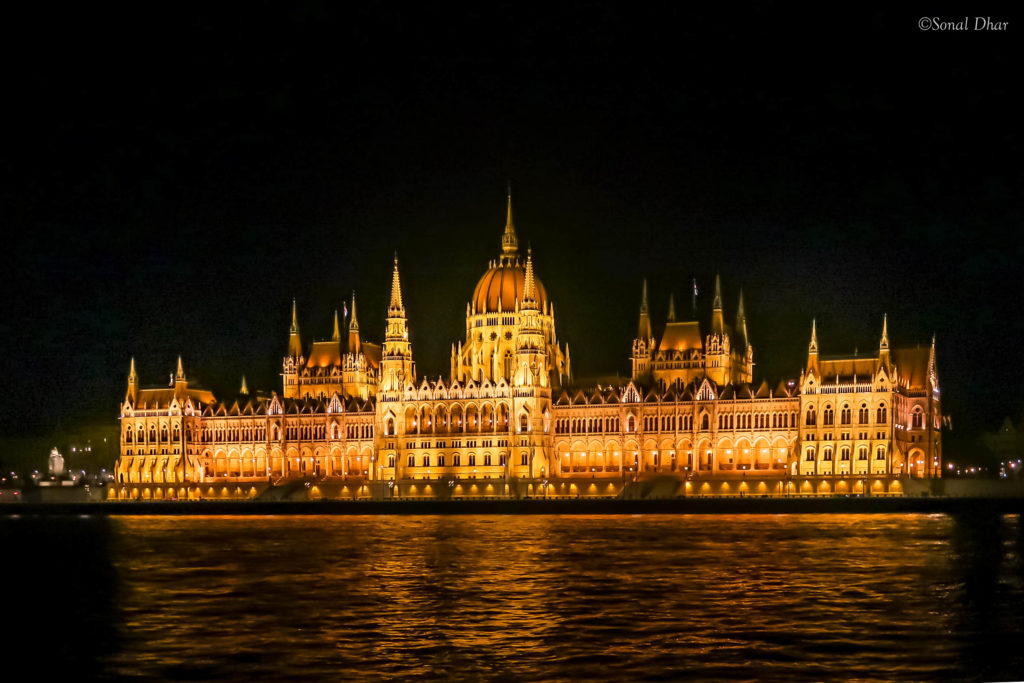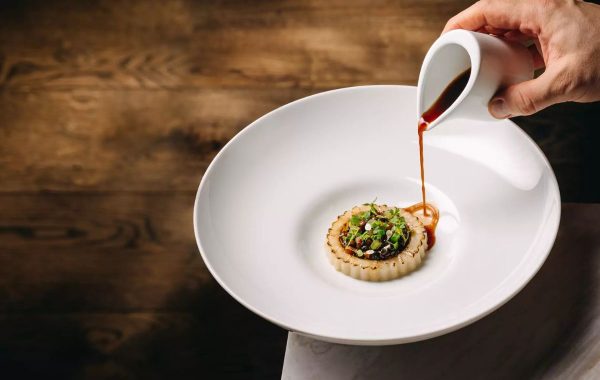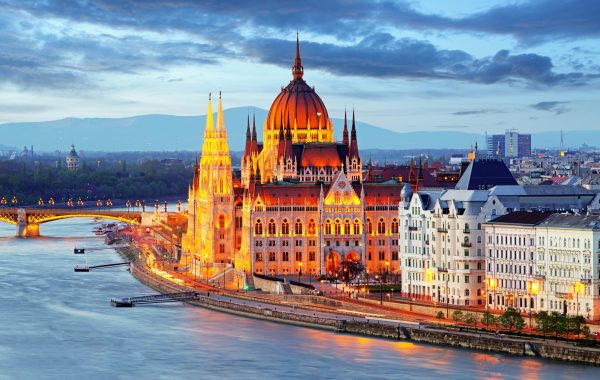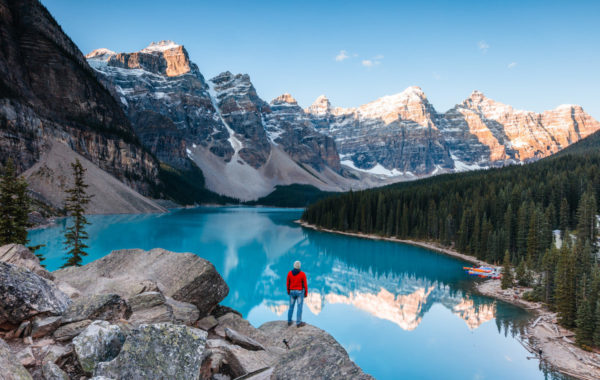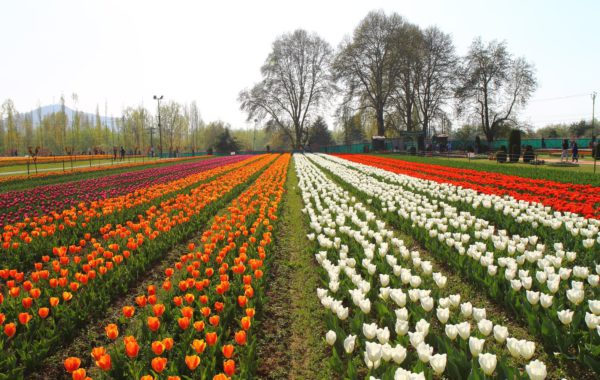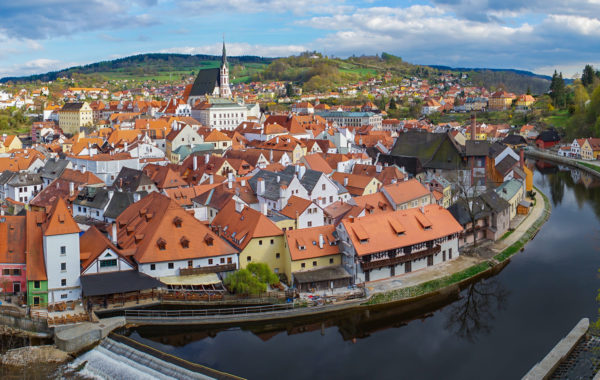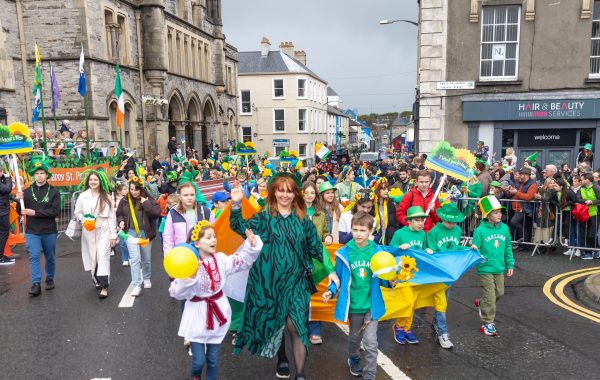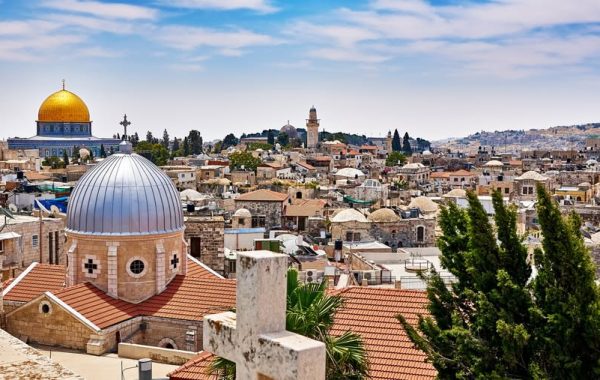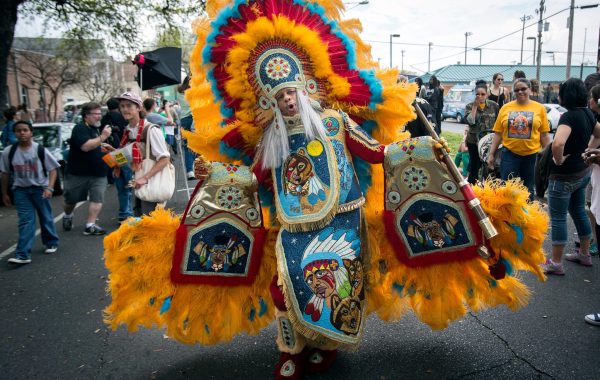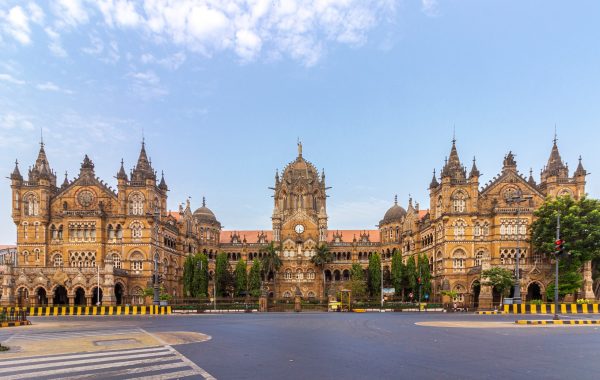The iconic Hungarian Parliament by night; one of the most admired buildings in the world.
Budapest completely took me by surprise, to say the least! Beautiful architecture replete with history, amazing food, the thermal baths, and the ruin bars: It has something unique for everyone! The city has a colourful history; from the times of the Magyars tribes, invasions by Mongols and Turks, Austrian domination, the very dark period of Nazi occupation, then Soviet occupation, followed by the formation of a Socialist republic until finally the new Republic was born in 1989! Hungary eventually joined the EU in 2011.
There are monuments representative of each era scattered over the city, reminding visitors of its chequered past. There is so much to see and experience! Here is my list of the places to see and things to do in Budapest!
An evening or night cruise down the Danube:
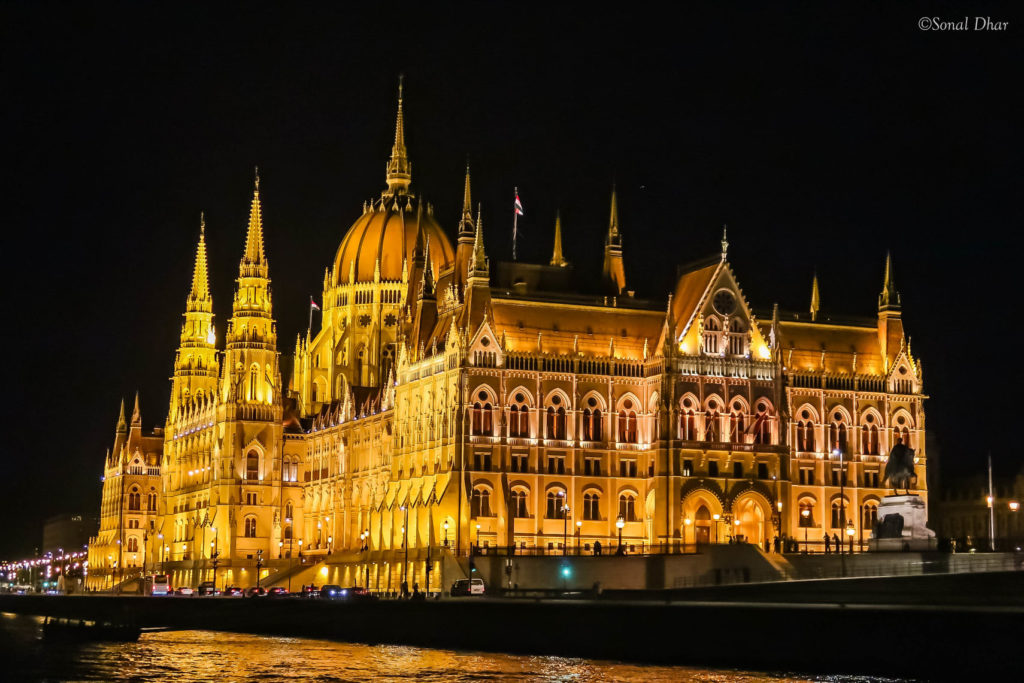
I would rank this at the top in the list of things to do in Budapest! Almost all the important landmarks of the city are lit up and visible on both sides of the river, and the night cruise has a charm and romance that one must not miss!
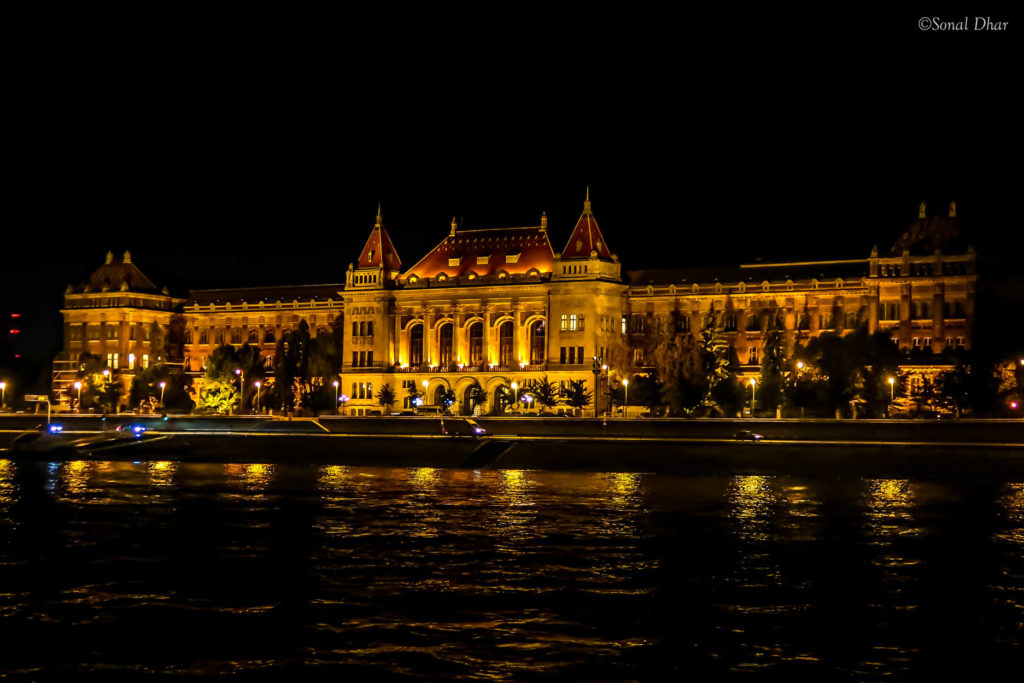
There are many choices as regards the type of cruise that one can choose: Ones that offer traditional Hungarian dinners with drinks, or just wine and of course the ones without any frills. I’m glad I picked the last cruise of the evening that did not include dinner or wine! I would have not been able to do justice to the food or beverage, with all those beautifully lit monuments, buildings and bridges glittering like jewels begging to be photographed!
The Széchenyi Chain Bridge:
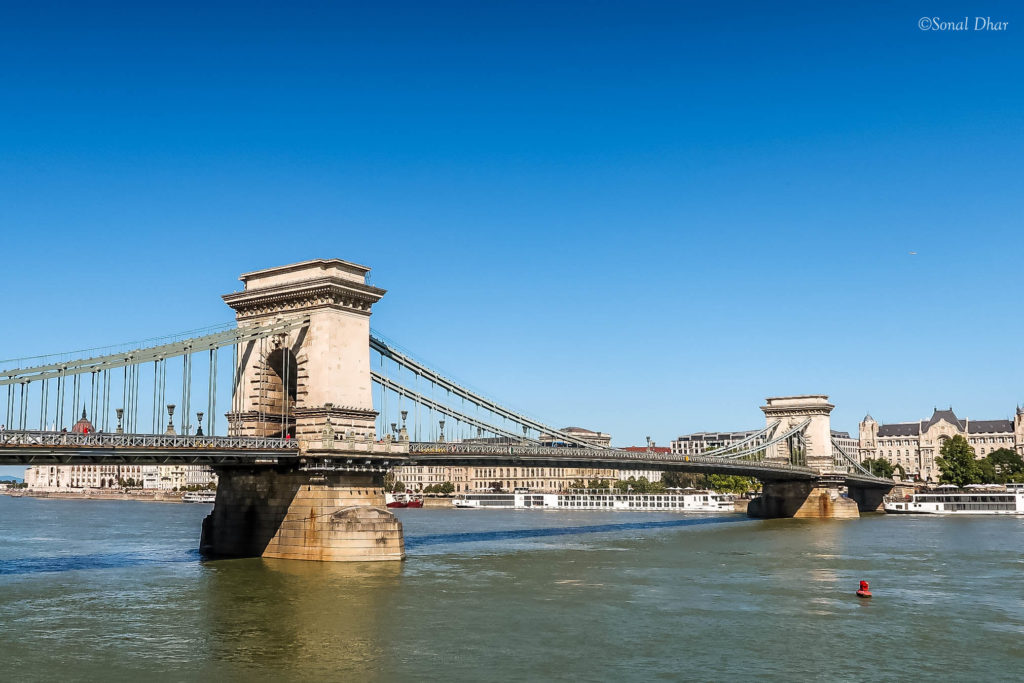
The city is divided into two sides by the Danube: The Buda Side and the Pest Side, connected by bridges. The most prominent of the bridges is the Széchenyi Chain Bridge, constructed between 1842 and 1849. Up until then they used barges to cross the Danube, which were useless when the river froze during winter months. During one such winter, Count István Széchenyi ended up being unable to cross the frozen Danube to attend his father’s funeral and realised that a bridge was essential, which is why it is named after him. Do try and get to the bridge early to get some good photos as once traffic builds up and tourists’ throng, getting good photos becomes impossible.
The Castle Hill: Buda Castle, Fisherman’s Bastion and Mattias Church:
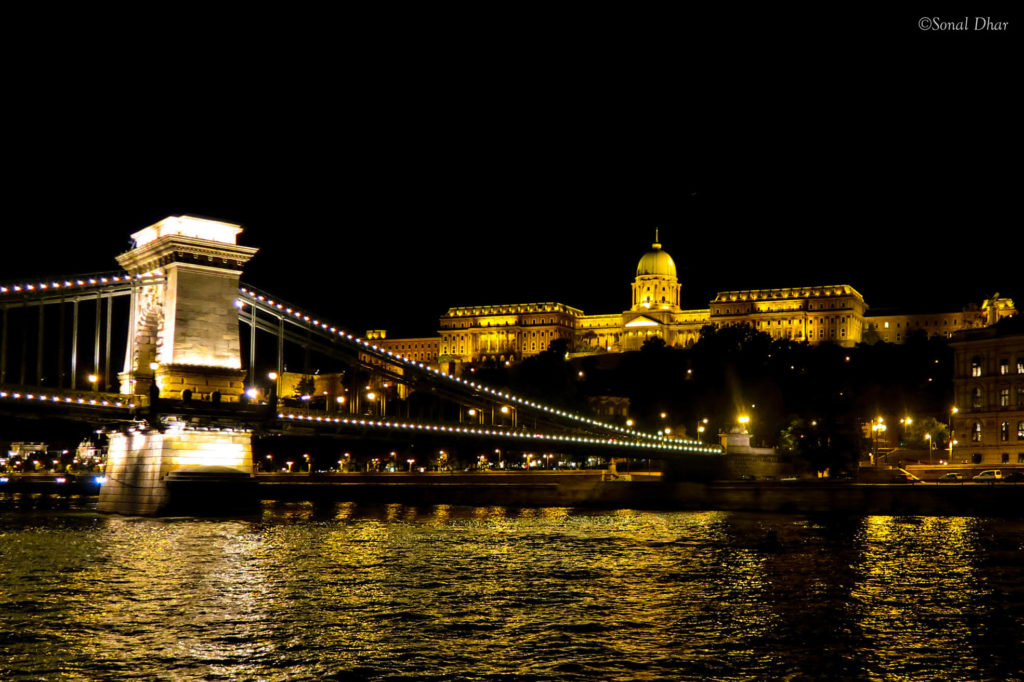
The Buda side of the city is the hilly area, and most of the spots here offer the most scenic view of the city. The entire Castle Hill area is a UNESCO World heritage site. Several parts of the castle / palace have been converted into museums, which are worth visiting.
An experience that one must catch is the Change of the Guard at the palace gates. Its fun to watch! Takes place at noon sharp! So make sure you get there on time and take your position before it starts to get the best view!
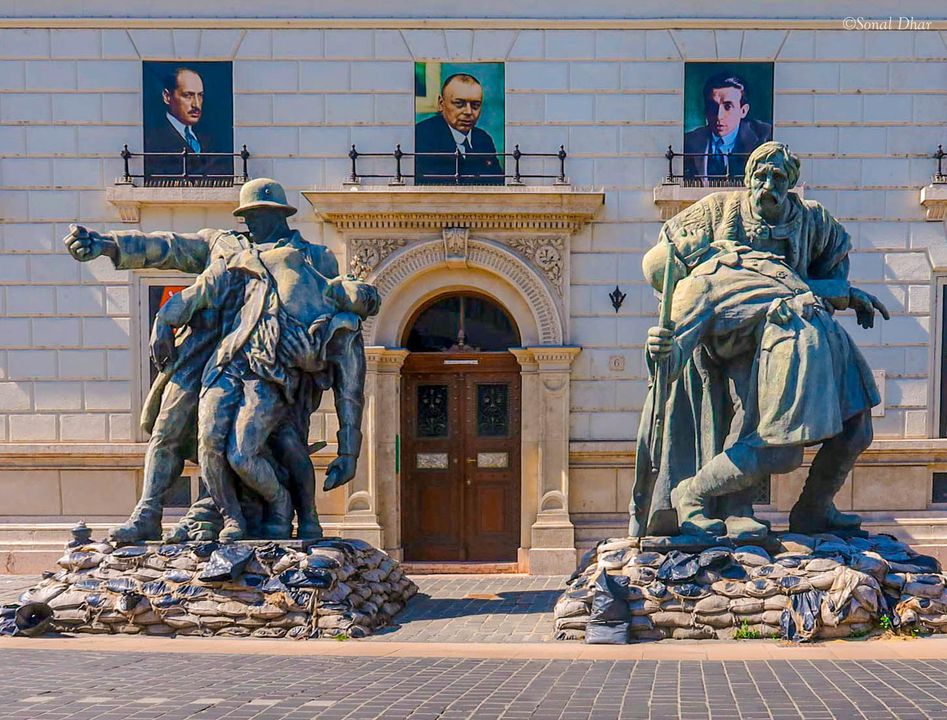
Almost at the base of the Castle Hill is the Várkert Bazár or Castle Garden Bazaar which houses a permanent exhibition on World War I, called “A new world was born”, which gives an unbiased history of that era. Even the statues outside are touching and convey so much about the futility of war. There is a quaint Funicular that one can take up to the top of the hill, as well as a Castle Shuttle which does the rounds at intervals.
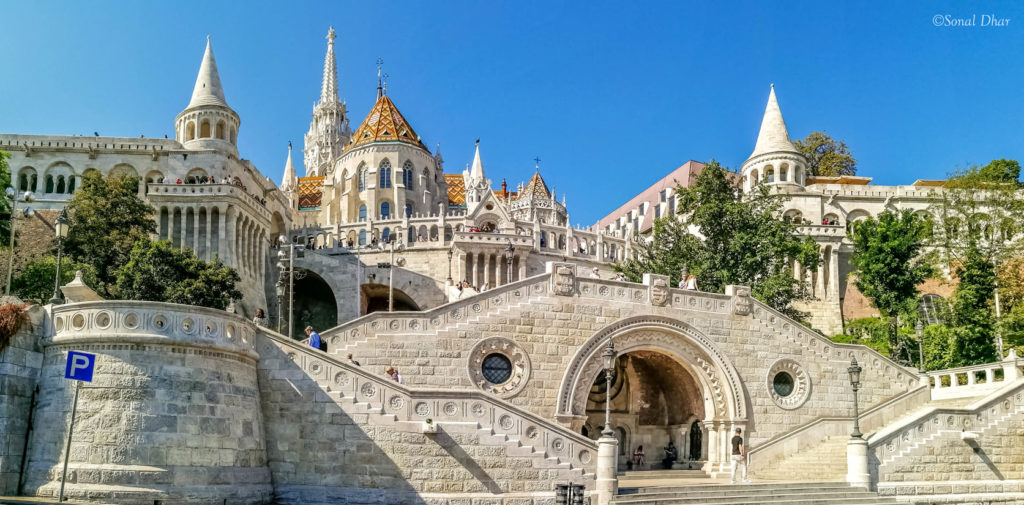
The most beautiful part of this area is the Fisherman’s Bastion, a beautiful fortification with turrets and arches that offer the loveliest views of Budapest. When it was built, it connected the Castle hilltop with Fishtown, a settlement of Fishermen who served as its guardians, and hence the name. The 7 turrets here are said to represent the 7 Magyar tribes who founded the country in 895AD.
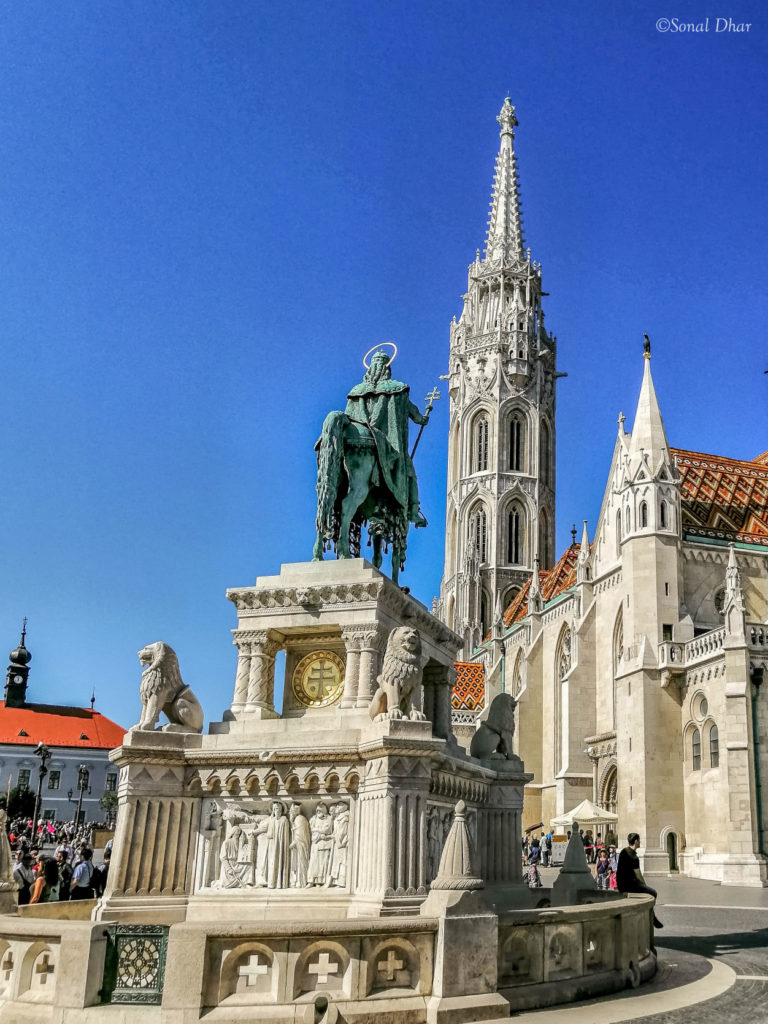
The Matthias Church is right here too. Its pristine white exteriors, the colourful tiled roof and the stunning design are a treat to take in! You can try and catch an evening concert here (on weekends) on the over-a-century old Organ which has 7000 pipes!
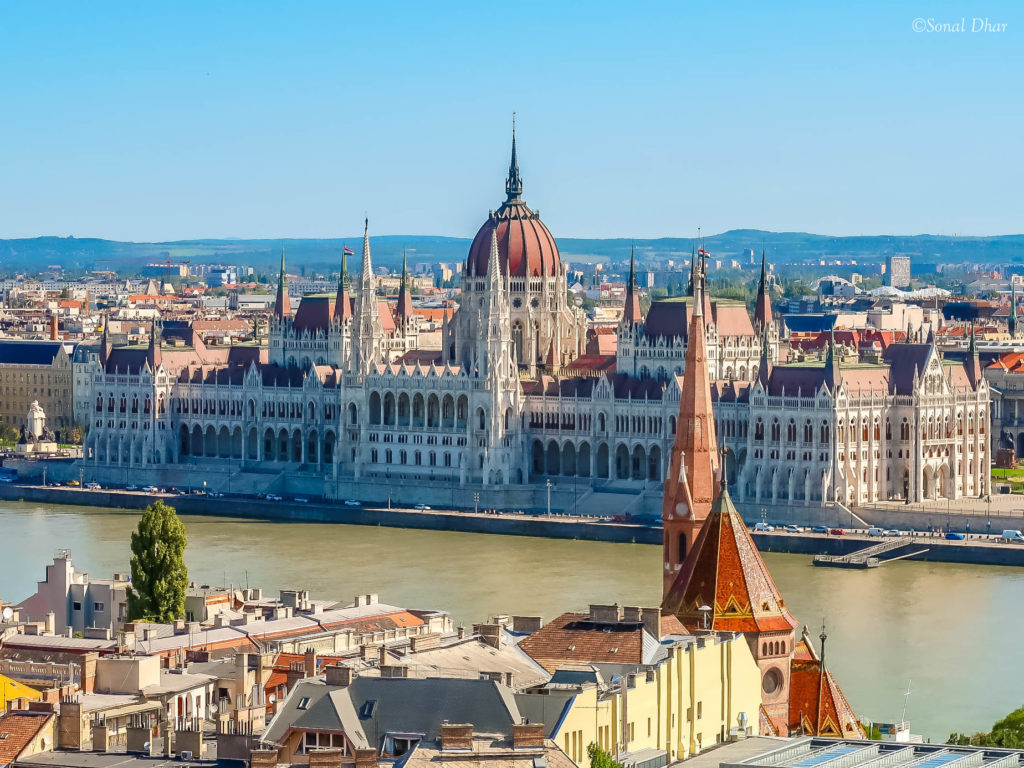
Here is a tip: try to get to this area as early as possible! Closer to noon it gets too crowded to enjoy the serene beauty of the place. There is a cafe here too and you can enjoy a coffee and a snack while taking in the views of the Pest side of the city across the Danube.
The Gellért Hill, Citadella and Liberty Statue:
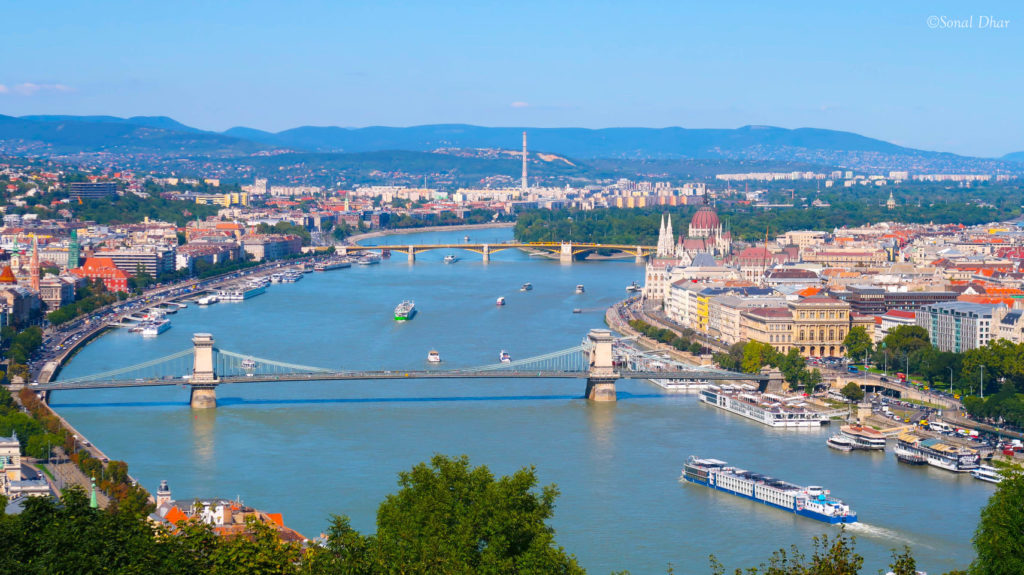
The Gellért Hill, Citadella and Liberty Statue are on the Buda side and are a greater height than the Castle Hill area.
The Citadella was built by the Habsburgs (The Austrian Royal family) just before 1850 to defend the city, but by the time the construction was over, peace reigned once more, and the fortress was never used.
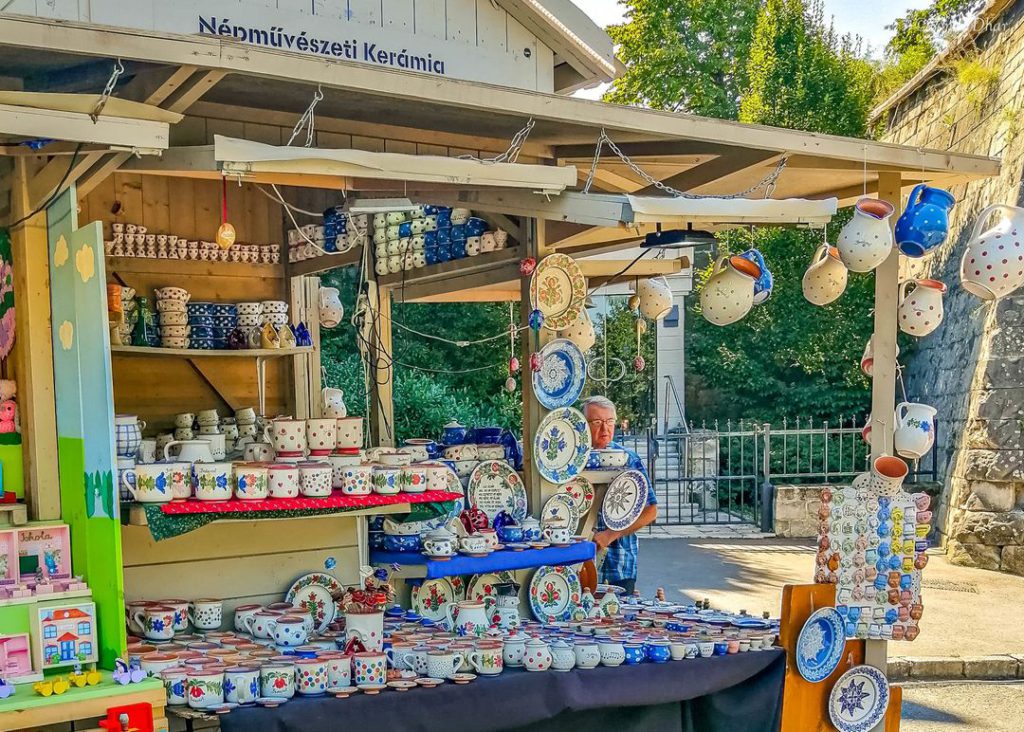
I had a god time shopping and sampling some local delicacies at the stalls along the structure, besides of course enjoying the mind-blowing views of the river and the city! (Shopping, eating, and beautiful vistas to boot; what’s not to enjoy, right?!)
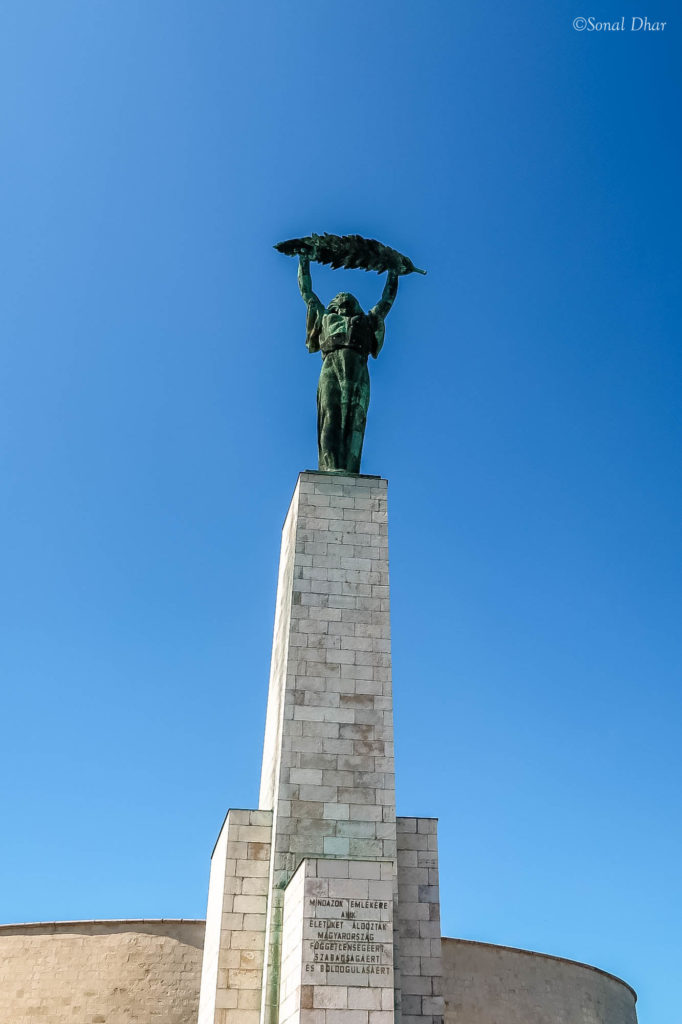
A short scenic uphill walk along the Citadella will bring you to The Liberty Monument. (No relation to the Statue of Liberty in New York, of course!) This beauty who holds up a palm frond in her outstretched arms; towers 14m high and stands sentinel over her city, personifying its freedom, and commemorating the sacrifice of those who gave up their lives for Hungary’s independence, freedom, and prosperity (As the inscription describes!)
The beautiful Gellért Baths, with their six thermal pools are also located close by. The underground spring water is said to have curative properties and promises to help alleviate joint pains, breathing problems and improve blood circulation. Don’t forget to carry your swimsuits along!
The Margaret Bridge and the Przemyśl memorial:
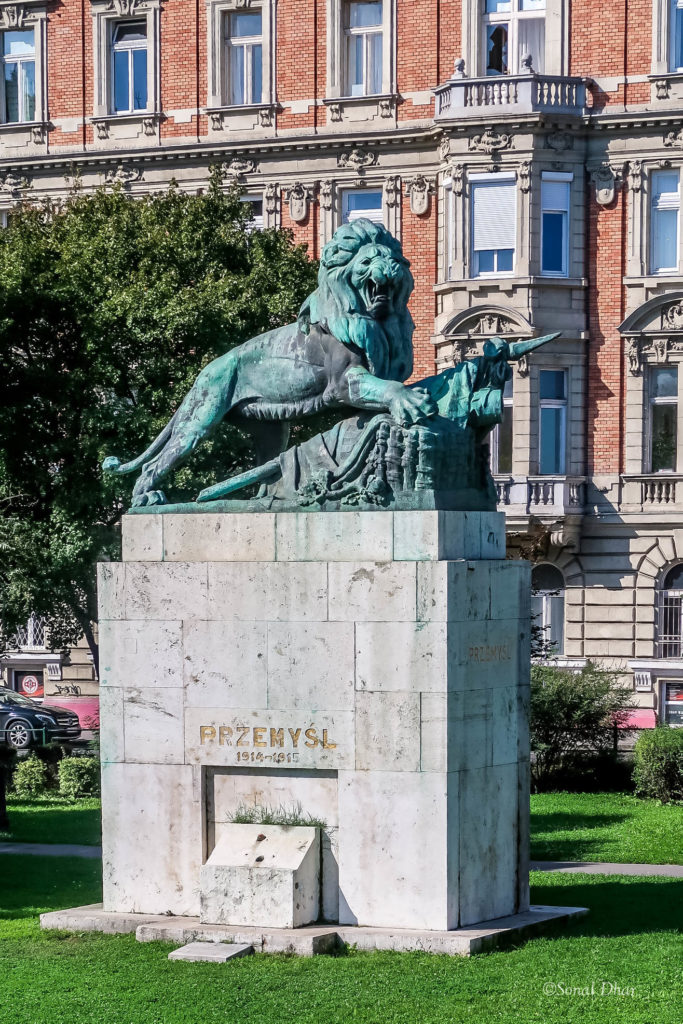
Besides the, Széchenyi Chain Bridge, the Margaret Bridge is also well known. On the Buda side of this bridge is a sculpture of a roaring Lion, with its paw on a canon draped with a flag. There is just one cryptic word inscribed on the base of the statue: “Przemyśl”. This sculpture is in memory of the soldiers who died in the infamous Siege of Przemyśl, the longest in the First World War, which was a crushing loss for the Austro-Hungarian Army.
If the Buda side is mesmerizing, the Pest side is no less fascinating! Here is the list of places that are a must-see on the Pest side of the Danube.
The St. Stephen’s Basilica:
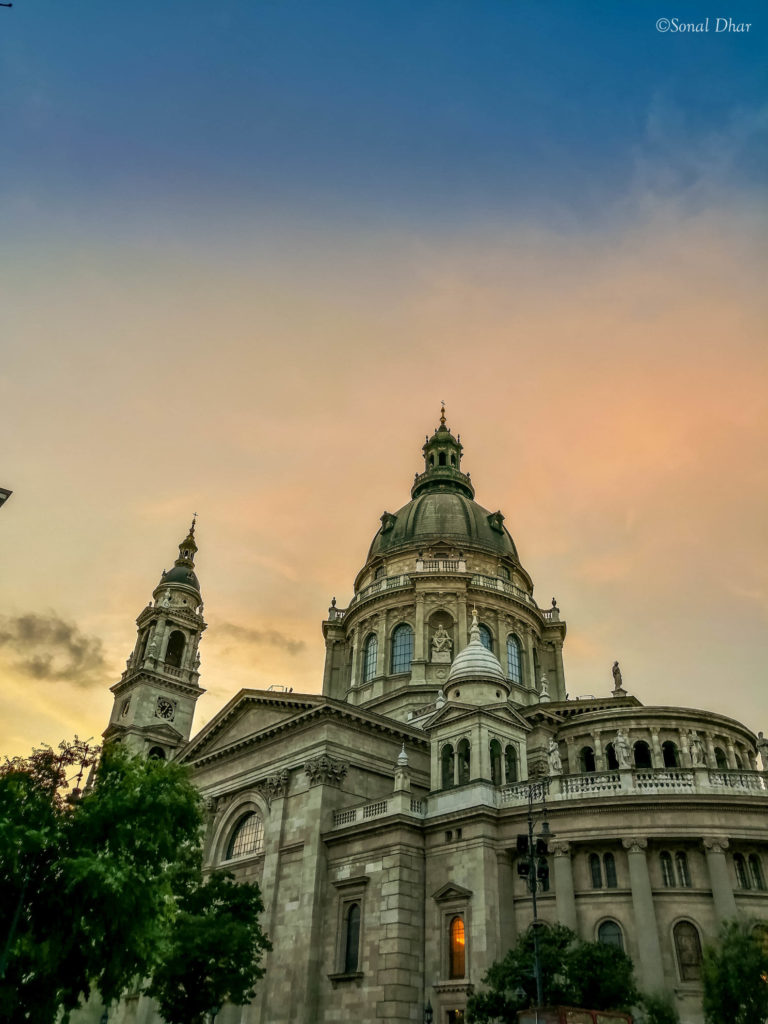
Named after Saint Stephen, the first King of Hungary, whose mummified right hand is kept here, the Basilica is truly magnificent.
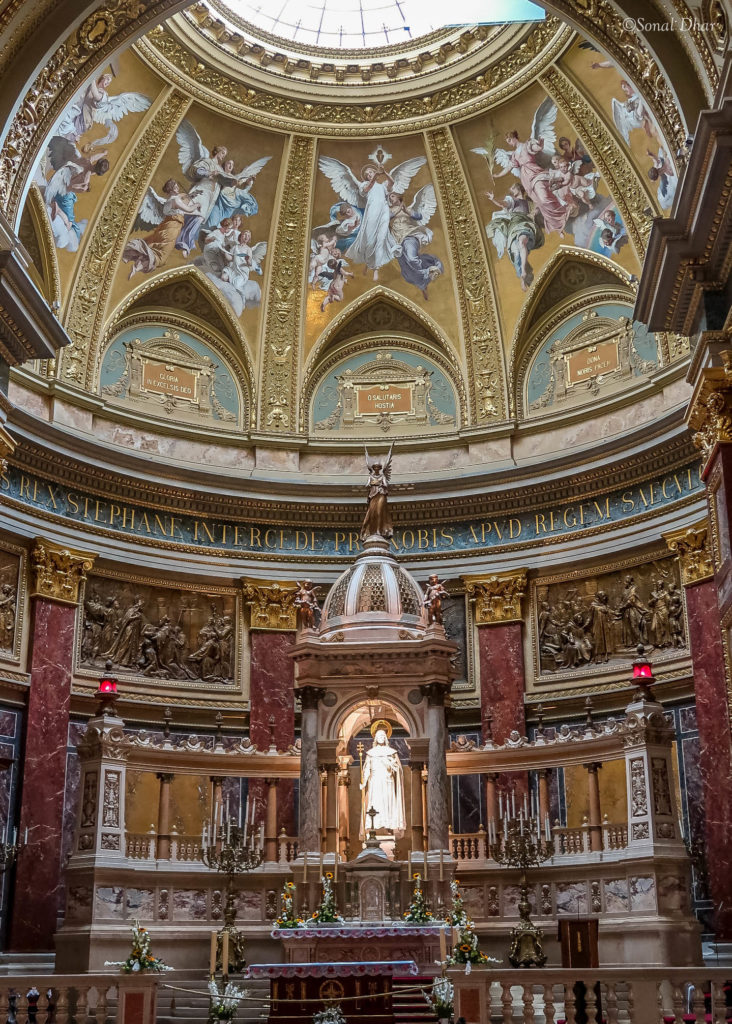
The Basilica is as beautiful inside as it is majestic from the outside. Do plan to spend some time here to admire the lovely interiors.
The Memorial for the Victims of the German Occupation:
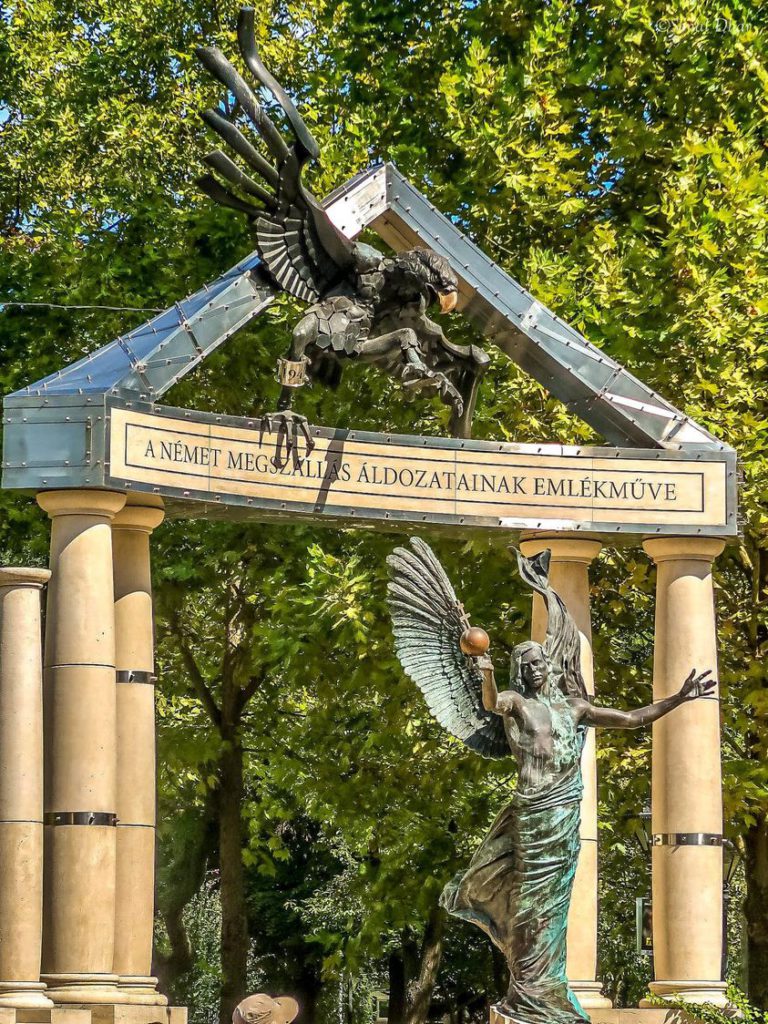
Walking distance from the Basilica, this is a sculpture of a bronze eagle, representing Nazi Germany, attacking Archangel Gabriel who represents Hungary. Many however believe that the Hungarian government at the time did not really resist the occupation and was in a way, complicit in the massacre of the Jews in the country, which is why the memorial is a controversial one. It is nevertheless a reminder of the untold horrors that were visited upon thousands of innocents in that era.
Freedom Square (Liberty Square):
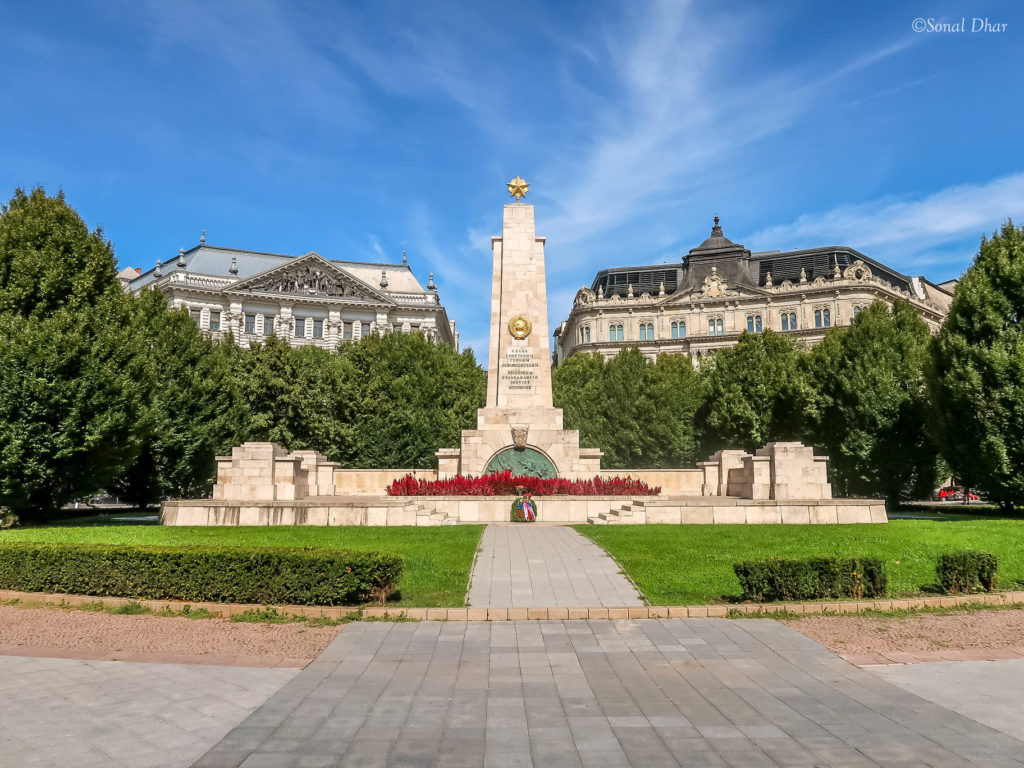
This is the Soviet War Memorial, built in 1945 in the memory of the Red Army soldiers who died during the liberation of Budapest from the Nazis. This again is a controversial one, being a reminder of the Soviet occupation.
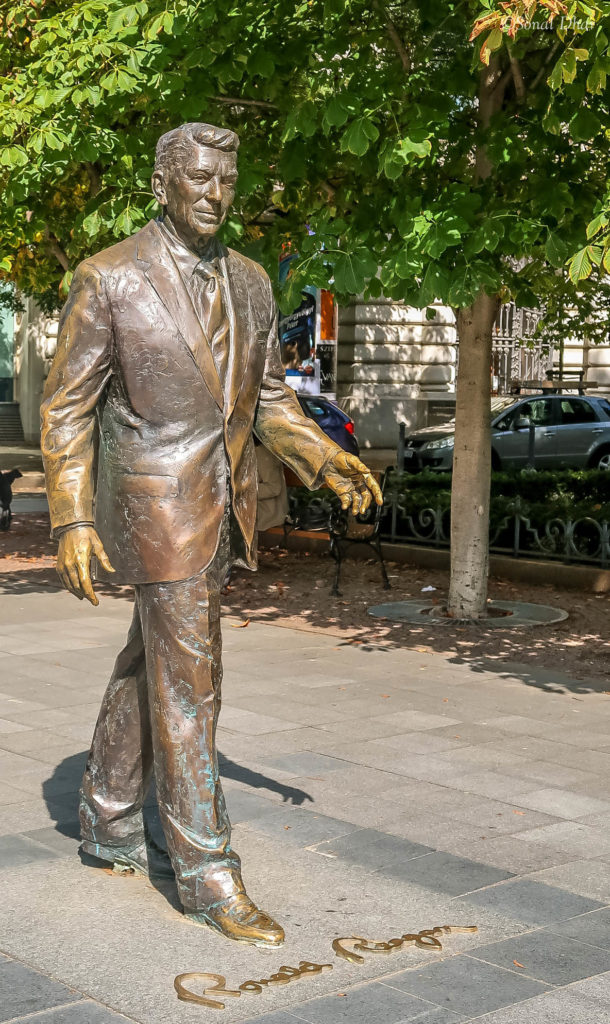
There also is a statue of U.S. President Ronald Reagan here, in gratitude for his efforts to end the Cold War! The U.S. Embassy is close by and the President has been sculpted in a mid-stride pose, as if heading over to it. From here one can walk to the Hungarian Parliament in a few minutes.
The Hungarian Parliament:
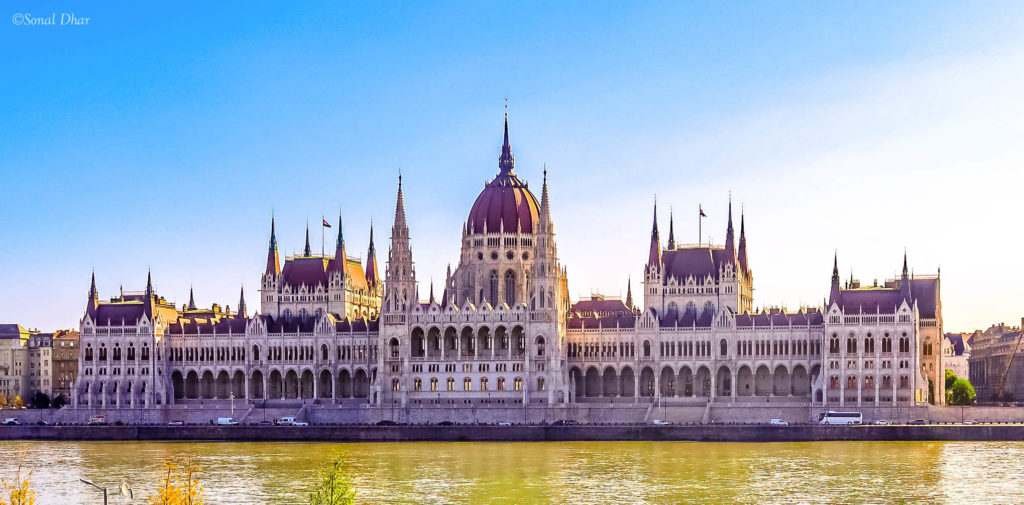
One of the most popular landmarks in all of Europe, with over 700,000 visitors each year, this is a beautiful building designed by the Architect Imre Steindl, who unfortunately lost his eyesight and eventually died before the building was fully completed.
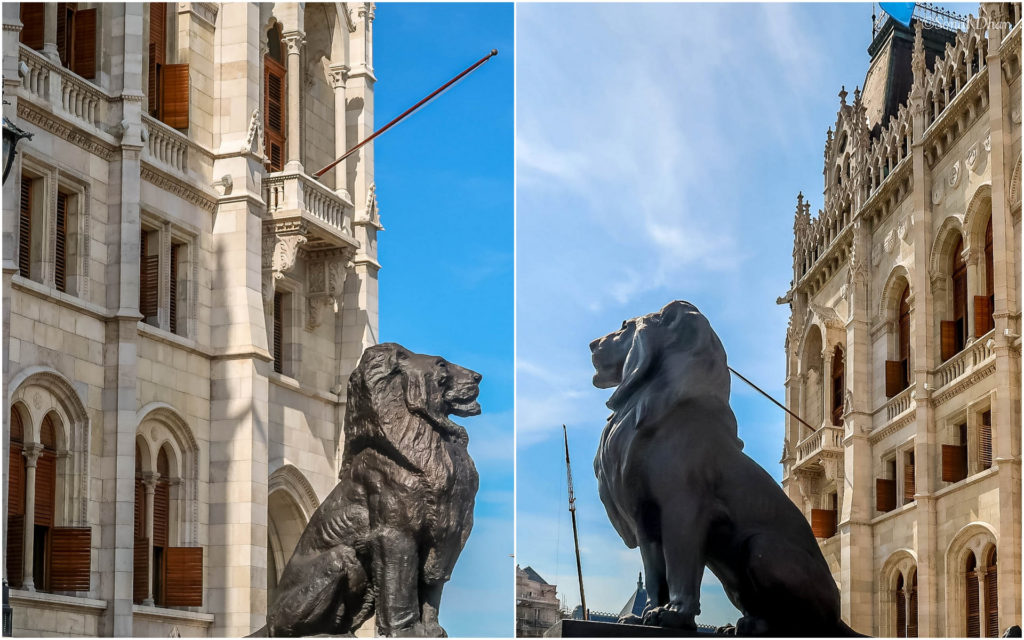
Do take a guided tour to learn all the secrets of this magnificent structure! Learn exactly how much gold has gone into its construction. Try to spot the subtle difference between the two lions on either side of the entrance and learn why they are different. See the crown and sceptre of the first Hungarian King exhibited here, discover how many towers are there and why that exact number and why learn why the height of the dome is exactly that of the St. Stephen’s Basilica!
Museum of Ethnography:
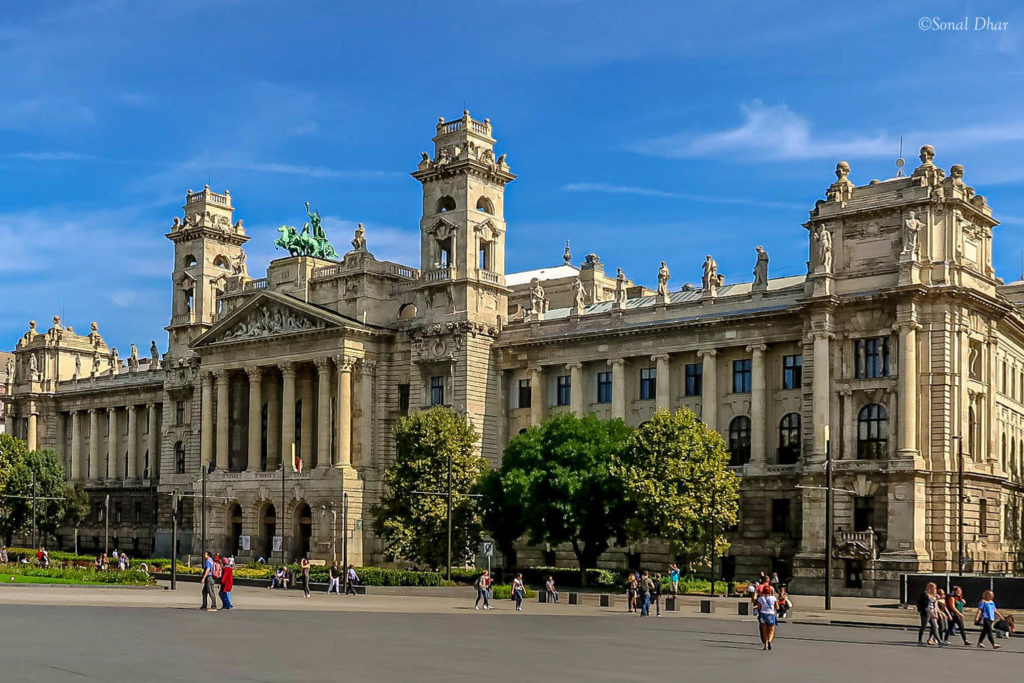
While you are at the Parliament, take the time to see the beautiful building across the square. Apparently, there was a competition held for the design of the Parliament and the winning design was chosen for that structure, while the runner up was chosen as the design of the Supreme court constructed right across from it. Notice the figure of the Roman goddess of justice riding in a chariot drawn by three horses on the building. Until1945 this structure served as the Supreme Court and later became the Museum of Ethnography but is soon to be converted back into the Supreme court!
“The Shoes on the Danube” Promenade:
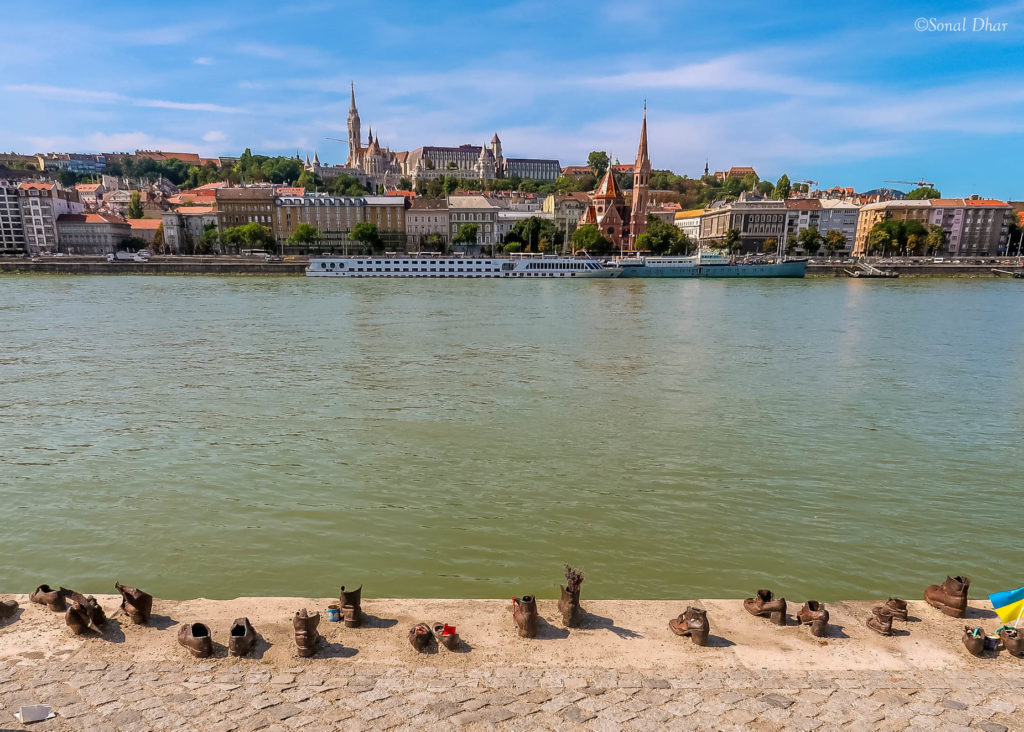
A short walk from the Hungarian Parliament and on the banks of the Danube, is the “The Shoes on the Danube” Promenade. A unique memorial made up of sculptures of 60 pairs of iron shoes of men, women, and children. This is a monument to the Hungarian Jews who were shot on the banks of the Danube during the winter of 1944-45, and their bodies thrown into the river. The sight of the shoes is gut wrenching and heart breaking. It is impossible not to feel the horror and the pain as one walks along this stretch. The Holocaust Tree of Life Memorial, which is near the Great Synagogue, also honours the memory of those murdered during the holocaust.
All the above-mentioned places are within short walks of each other and can be easily covered in a day if you are making a short trip, or over a more leisurely couple of days if you have the time.
Next head over deeper into the Pest side to the City park area, where the Vajdahunyad Castle, the famous Széchenyi Baths and Swimming Pool as well as the Hero’s square are located.
The Vajdahunyad Castle:
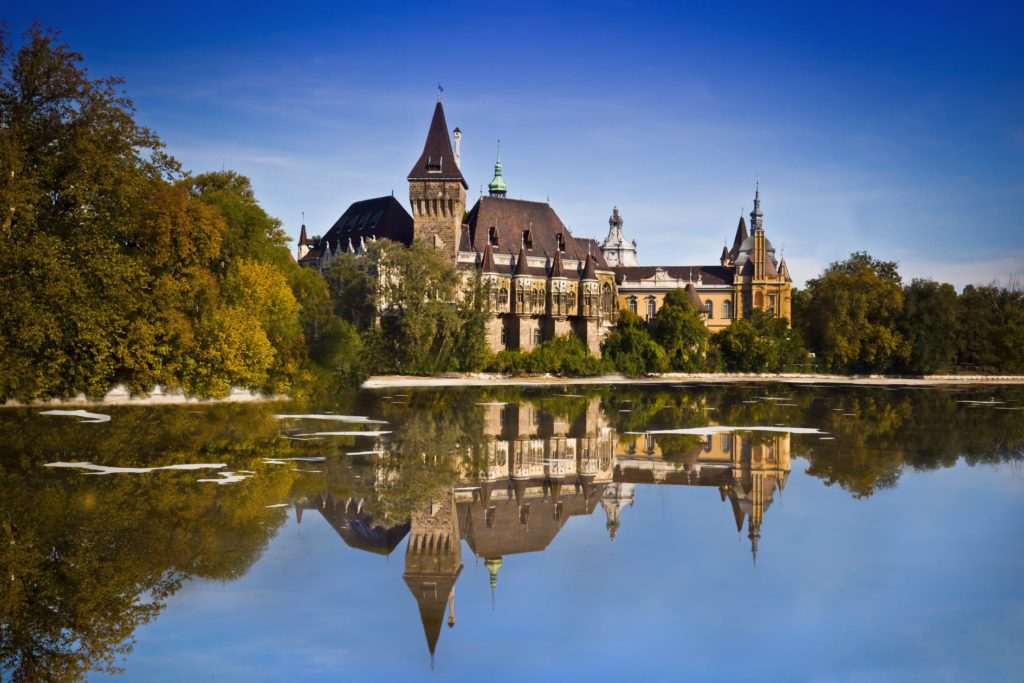
This lovely structure was constructed in 1896 during the Millennial celebration of the foundation of Hungary. It was originally built as a temporary structure made of wooden planks and cardboard cut-outs, but became so popular that a permanent one was eventually built, with stained windows, vaulted ceilings, and majestic marble staircases, etc. Also believed to be the inspiration for Bram Stoker’s interpretation of Count Dracula’s castle, a bust of the Hungarian actor Bela Lugosi who played the character can be found here.
Széchenyi Thermal Baths and Spa:
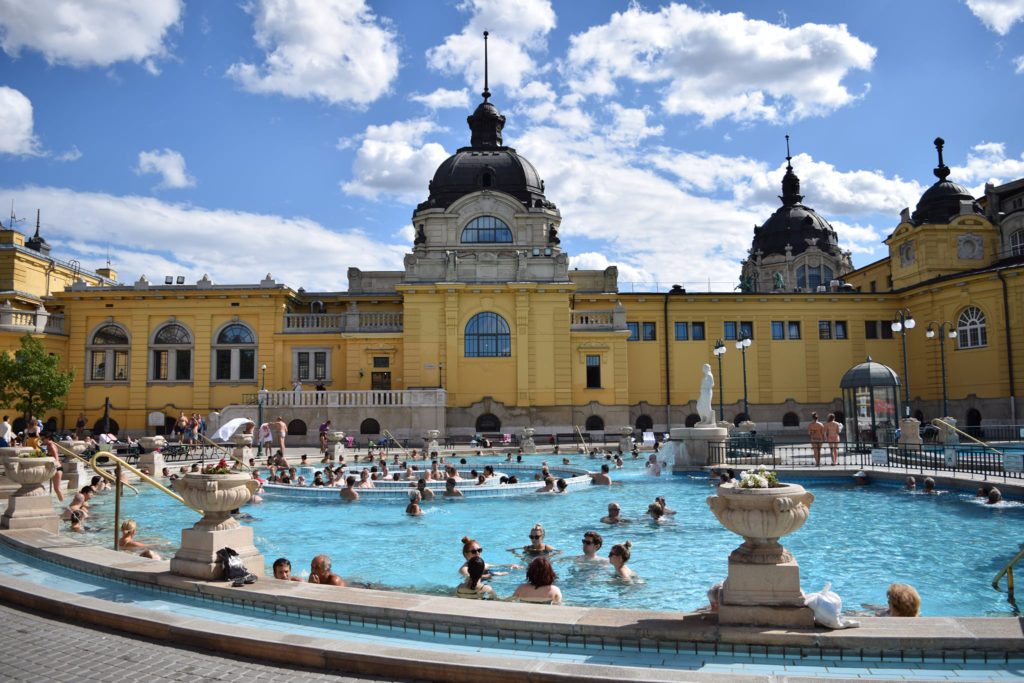
This is a unique complex, whose 15 indoor baths and 3 grand outdoor pools are fed by two thermal springs whose medicinal hot waters are said to be immensely therapeutic. The complex also includes saunas and steam-baths
Heroes Square:
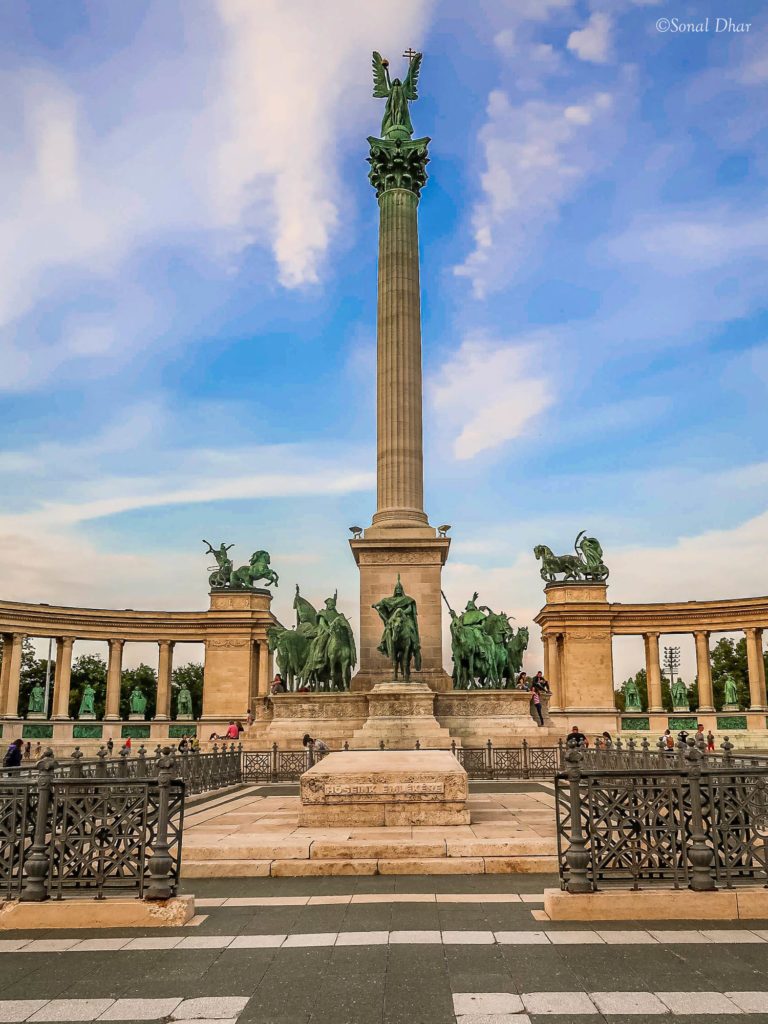
This is a serene square with a statue complex, the centre one being a column topped by a statue of the archangel Gabriel, with statues of the Seven Magyar chieftains at its base. In front of this is the Memorial Stone of Heroes.
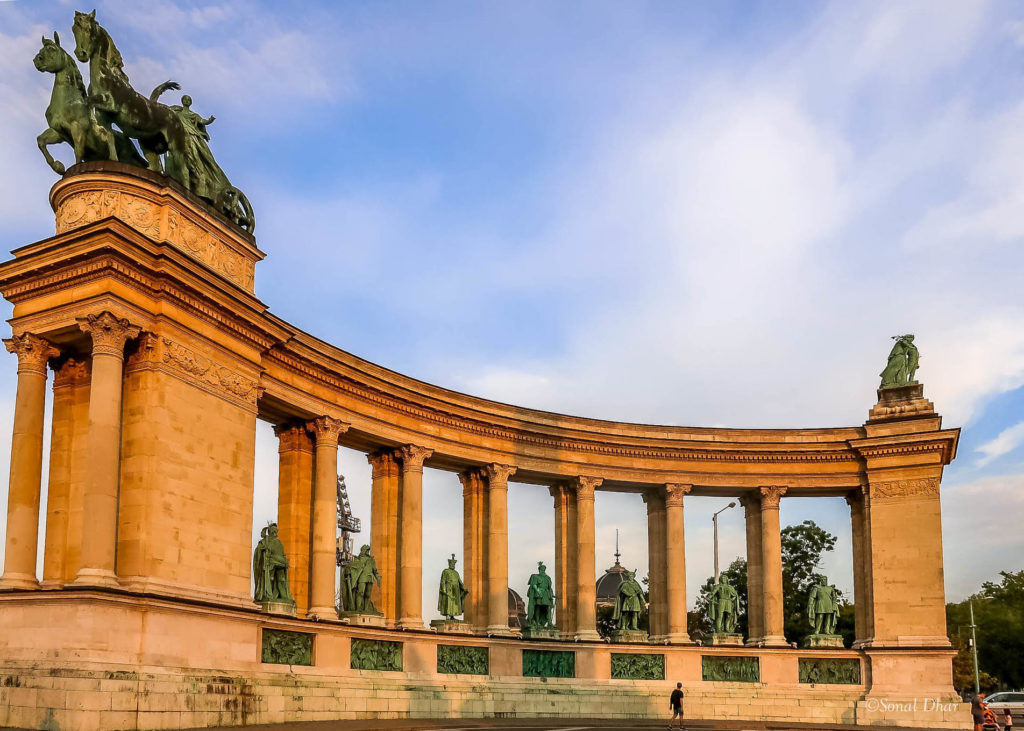
Behind the central column there are two matched colonnades, on either side, with seven statues representing various important historical figures as well as those depicting war, peace, a couple representing labour and wealth and another knowledge and glory. The square is beautiful at sundown as the setting sunbathes it in a golden light and is as beautiful at night, with the lighting.
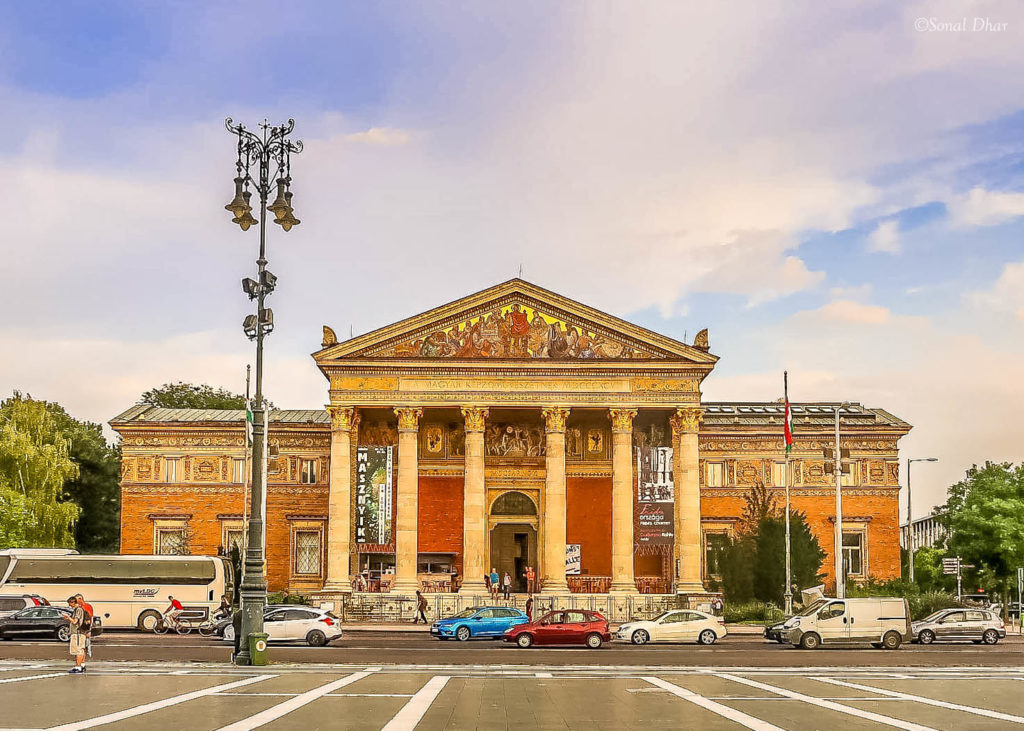
The Museum of Fine Arts and the Hall of Arts are located to either side of the square.
Great Market Hall (Central Market Hall)
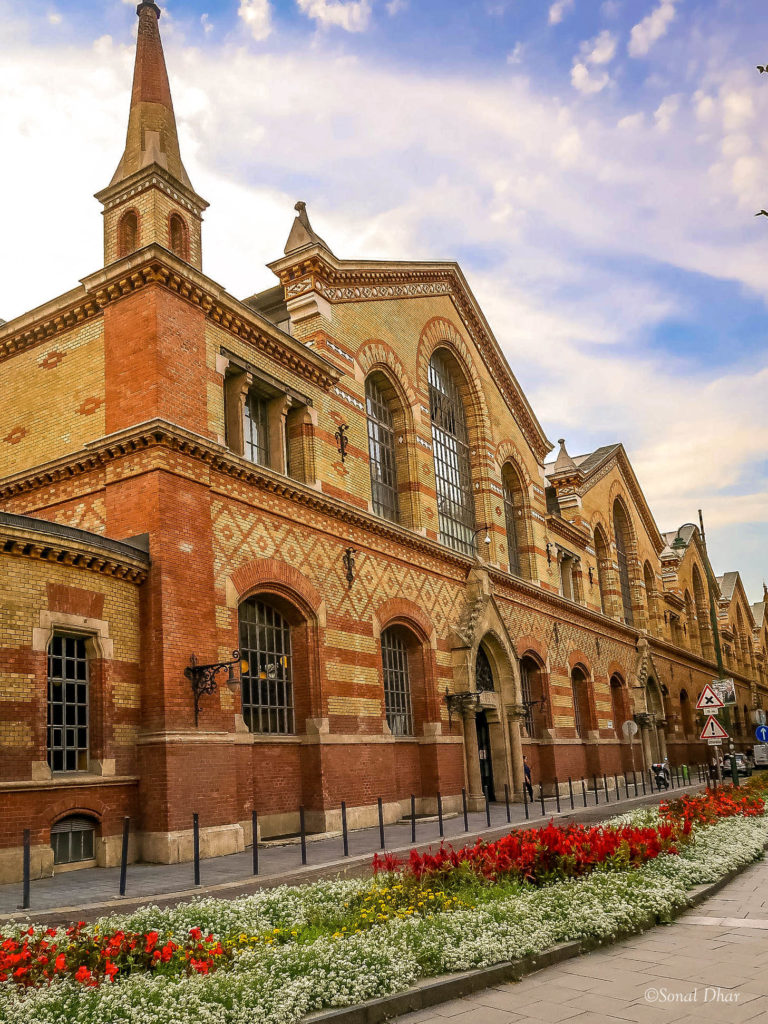
By now if you have had enough of just sightseeing, head over to the Great Market Hall, also known as the Central Market Hall, a beautiful 3 storey indoor market, constructed in 1897 and later restored in the 1990s.
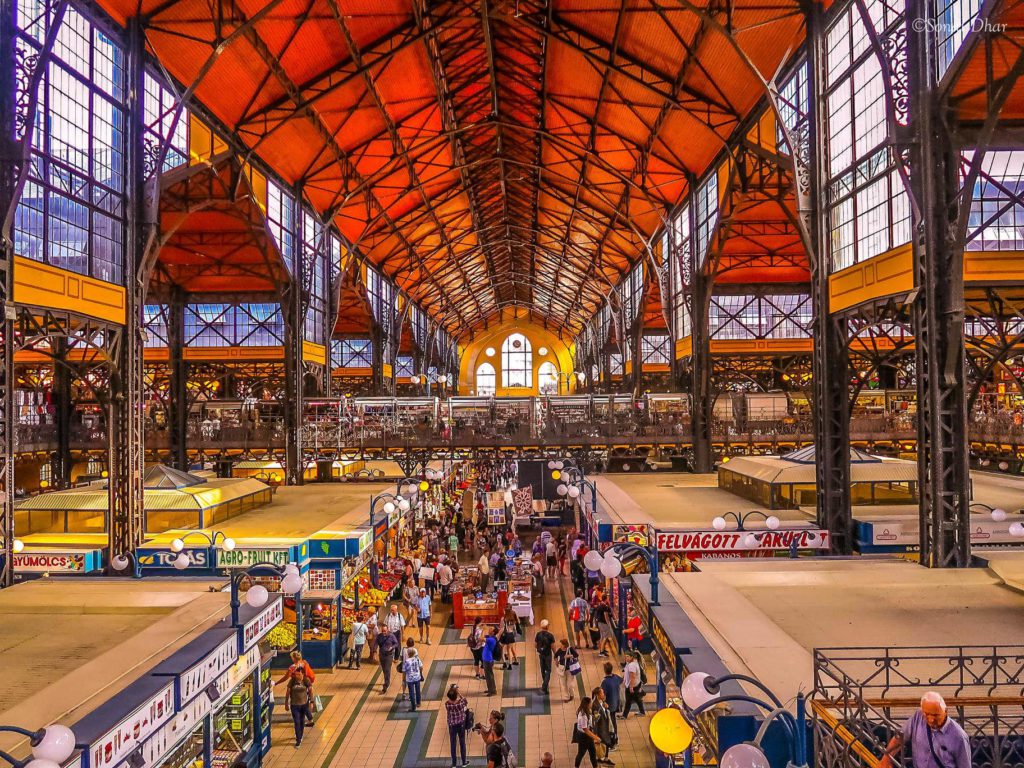
Head there with a few empty shopping bags and pick-up mementoes for friends and family, including the famous Hungarian Paprika (everyone loved it!!), cute little chilli shaped fridge magnets, a variety of salamis and sausages, artisanal foods, amazing variety of honey, and the famous Tokaj wine from the region (a sweet fruity one, almost like Ice-Wine!).
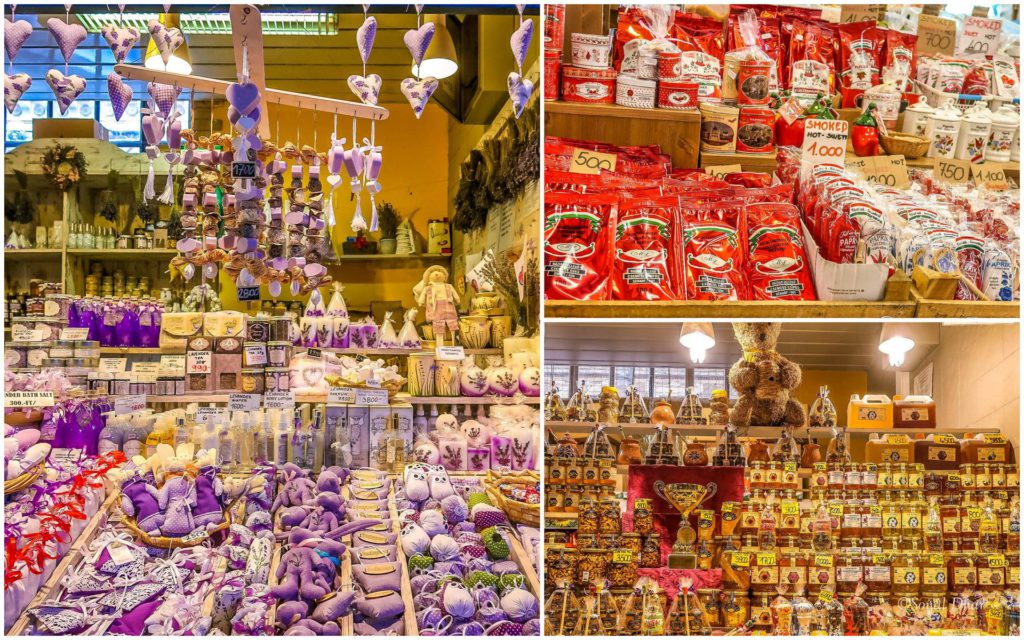
You can plan to have lunch here and feast on traditional Hungarian street food specialities.
On the upper floors you will find stalls selling traditional embroidered items, and we spent some time chatting with an elderly lady who demonstrated her skill with the needle to us.
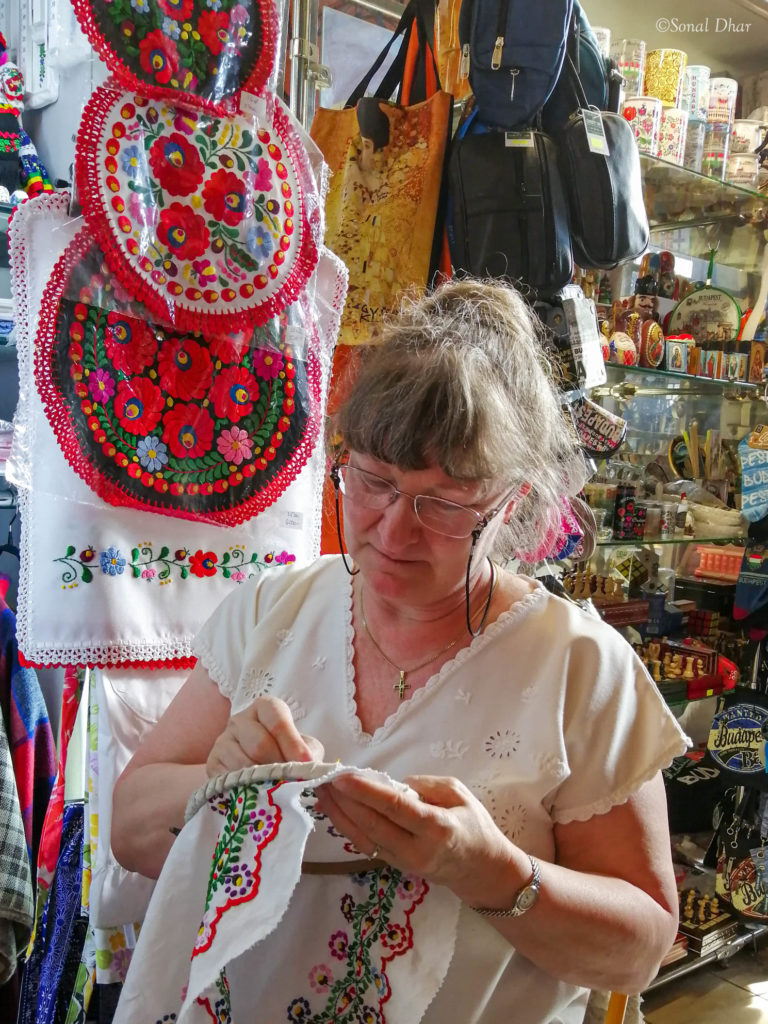
The Margaret Island:
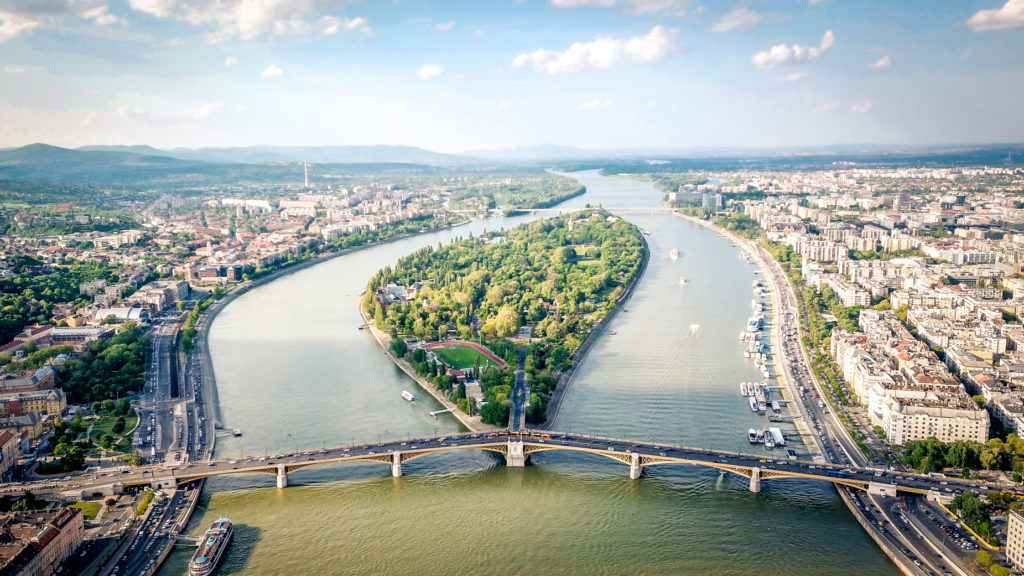
The Margaret Island, which is in the middle of the Daube is a beautiful green space about 1 square kilometre in size with a jogging track, fountains, public baths, and a beautiful water tower dating back to 1911, which for a small fee, one can climb to see some amazing views of the city.
Budapest Keleti Train Station:
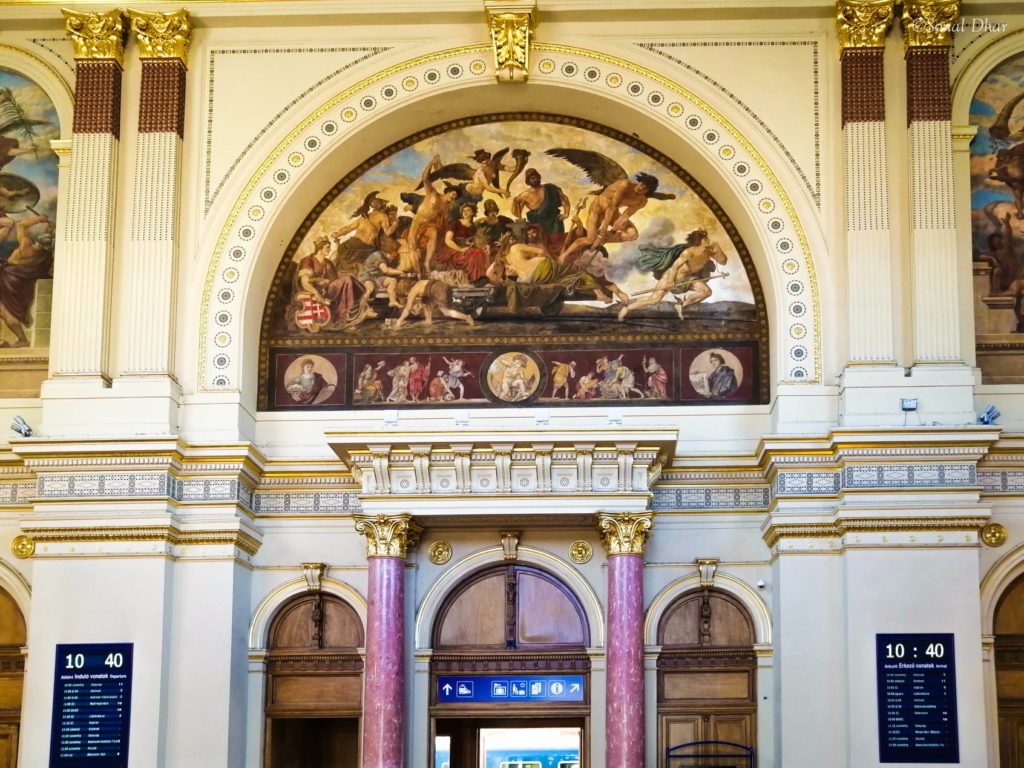
Oh, and before I close my description of the places to visit, let me mention how beautiful the Train station itself is! Look at the photo to believe it! That is where we took a train from to our next destination.
Food and Drinks in Budapest:
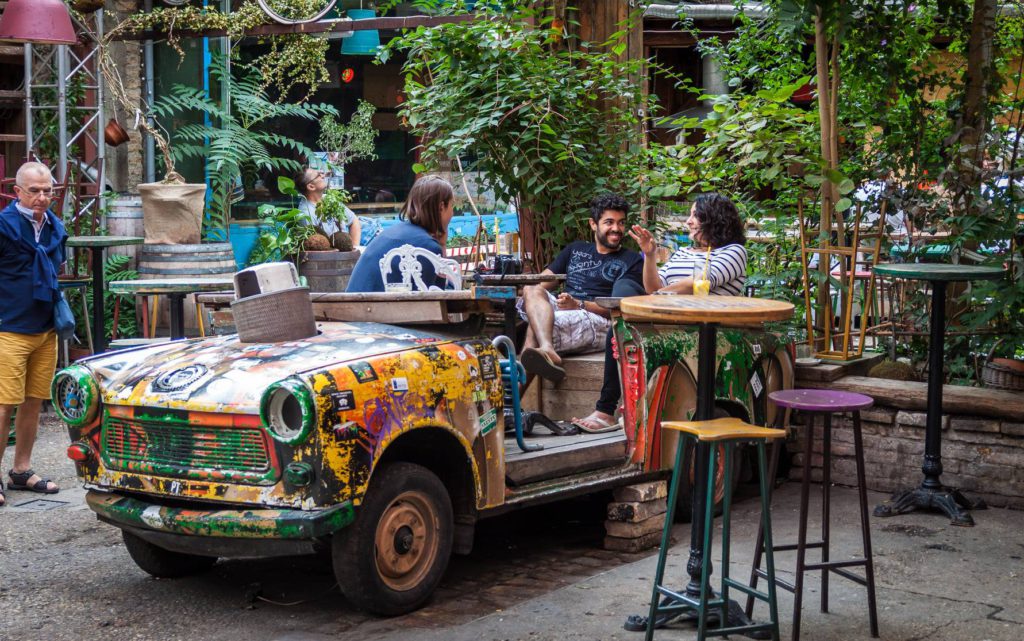
The Ruin Bars were originally set up, in nearly dilapidated buildings located in abandoned ghettos, to offer affordably priced drinks but have now become an iconic part of the cityscape of Budapest. They have a bohemian air with their mismatched furniture, very basic lighting, and funky, retro decor. Once part of the underground scene, these are now hip and cool. Each of them has its own atmosphere, and unique ambience. Many organise informal concerts, project movies, and even sell local produce. All in all, they are a unique experience that you do not want to miss!
Cafes:
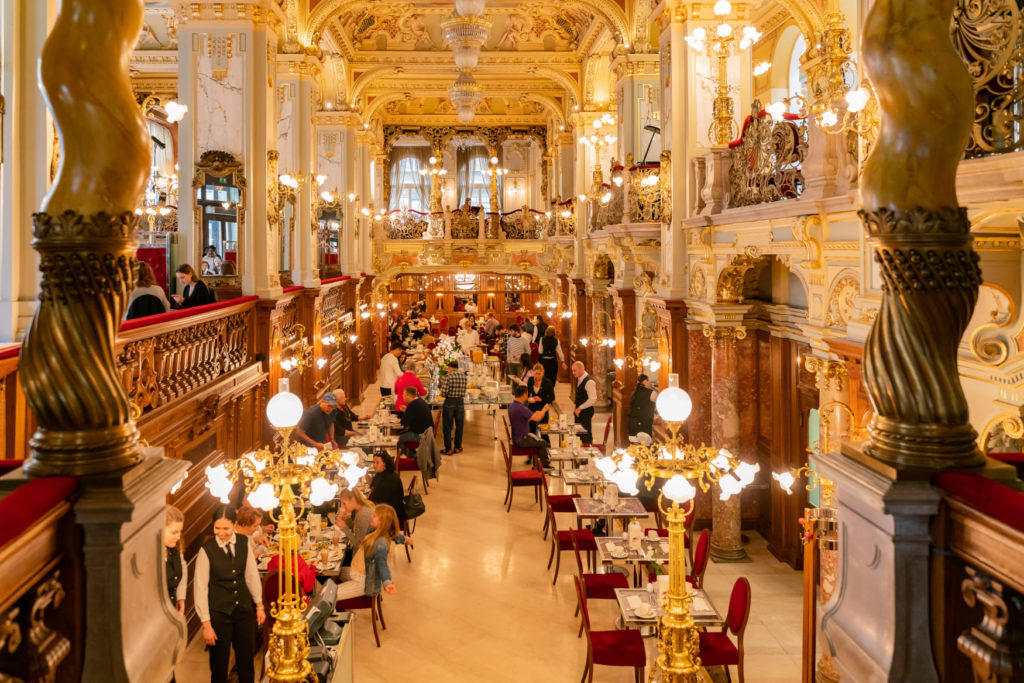
Budapest coffee houses or kávéház, as they are called locally, are well known not just for their wonderful coffees and baked goods but more so for their beautiful interiors. The 16th century Turkish occupation was responsible for bringing Coffee to Hungary and though many of the old cafes were shut down during its socialist days, they have now been restored to their original beauty with elaborate frescos on ceilings, antique furniture, and elegant decor.
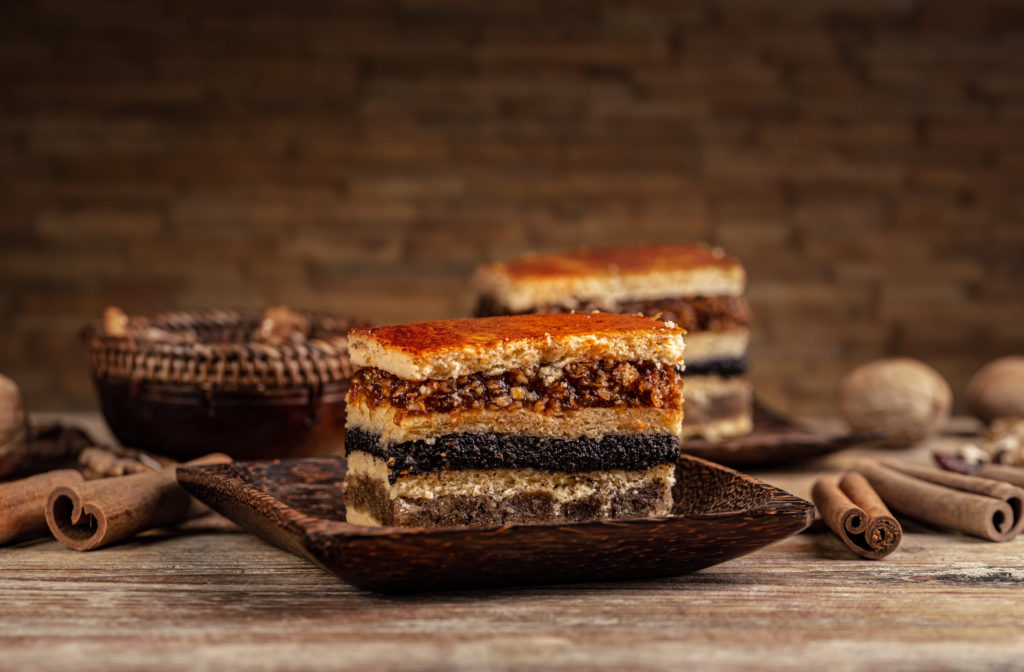
Do try the Flódni, a Jewish traditional cake that you can find in many places in Budapest. Consisting of five layers of dough and four fillings; poppy seed, apple, walnut and plum jam, this is a treat you must not miss!
Budapest Street Food:
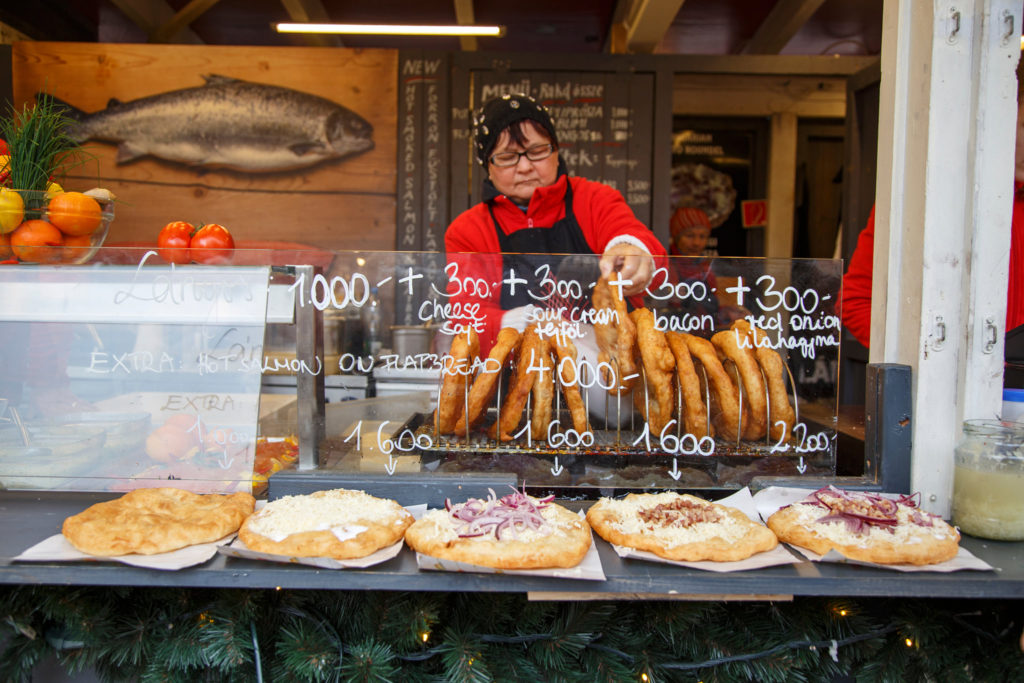
Budapest is well known for its street food, including lángos, which is basically fried bread made from yeasted dough, with a light and fluffy texture, often stuffed, or topped with condiments such as cheese, sour cream, onions, sausage, eggs, bacon, or even boiled potatoes and garlic.
One must of course try the Goulash in Budapest! This is a stew traditionally made with beef and vegetables, laced with spices, especially the very flavourful Hungarian Paprika. However now there are plenty of restaurants that serve Vegan versions of the dish too! A must try!
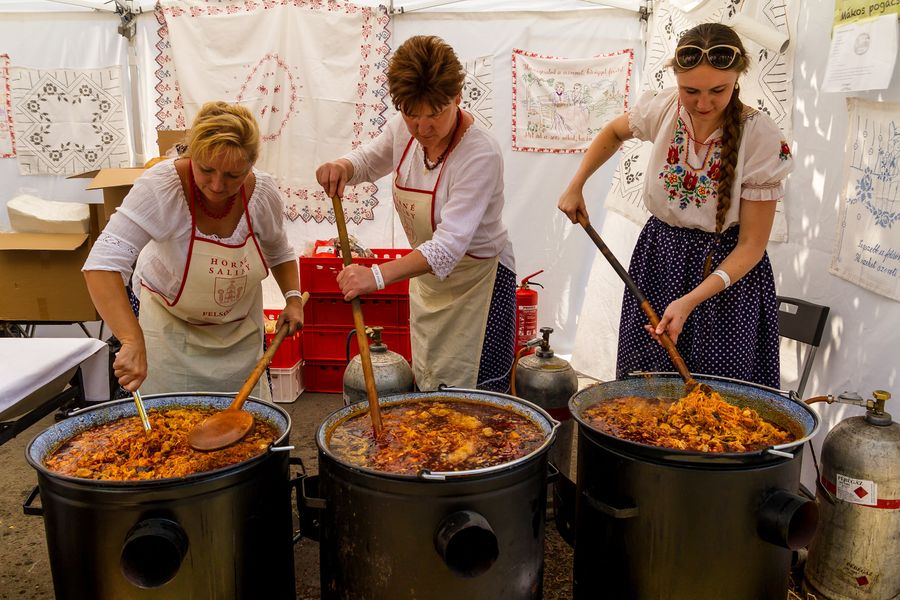
And Now For Some Tips:
- The Hungarian currency is HUF or Hungarian Forints. Euros are accepted occasionally, however for the most part, you need to carry Forints. You can buy them at the airport / train station. You will get a slightly better price at the exchange counters at the city centre. ATMs work well and it is no problem to withdraw as and when necessary from the ATMs scattered around the city.
- They have a nice shuttle service from the airport to the city. For a fixed price per person, you can get dropped off to your hotel / BnB. Works out cheaper than a Taxi.
- Fleet taxis are reliable, but we had our Host organise them for us, as language was a bit of a problem.
- Do pack your walking shoes!
- Budapest is well connected by trams and metro. You can buy a travel card for the days that you are staying there from Kiosks at any of the stations.
- Hop-on-hop-off bus tours are a great option too, especially if you have kids or elders with you. I went with my parents and therefore chose this option. Our tickets included a free walking tour (with a highly informative guide!) and the cruise along the Danube. Highly recommend this.
That’s it, then! Enjoy your trip and let us know how it went!
Travel Update : Please note that there could be travel restrictions for international travellers to Budapest because of the ongoing pandemic. Before travelling, please always check the latest government advice about COVID-19 travel restrictions in your destination.
For latest travel news and updates, food and drink journeys, restaurant features, and more, like us on Facebook or follow us on Instagram. Read more on Travel and Food Network
Trending Now : TFN 2021 Guides
A Week Along The Mesmerizing Amalfi Coast | Travel Guide 2021
48 Hours In Prague And 10 Tips To Make The Most Of It | 2021 Travel Guide
Sonal is an Engineering Consultant, Trainer and Facilitator. She travels extensively for work as well as leisure and loves to share her travel photos and stories on her blog www.sonalstraveldiaries.com. She loves trying out local cuisine whenever she is traveling. She also occasionally dabbles in culinary experiments for fun and also to devise sneaky ways to get her family to eat healthy, nutritious food.


